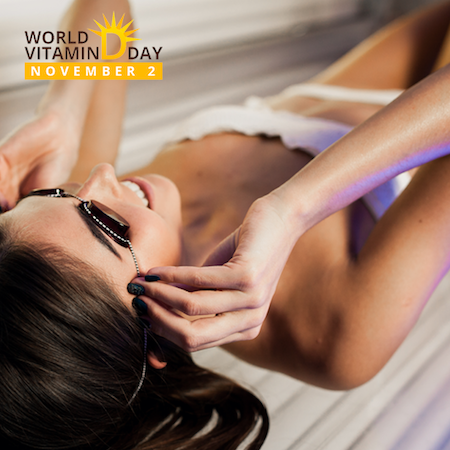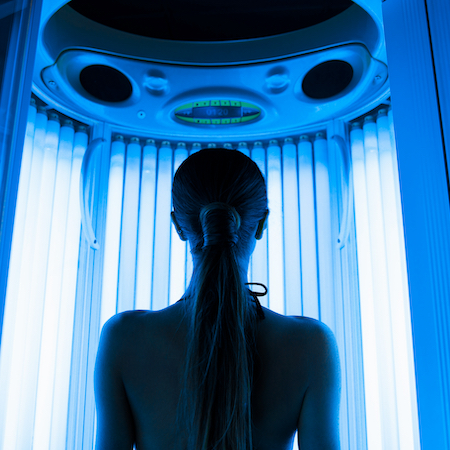As red light therapy has increased in prominence in tanning businesses, customers have noticed something interesting. They’re losing more weight, fat, and inches. While these customers seek red light for other reasons, such as skin care benefits and anti-inflammatory effects, weight loss can certainly be a pleasant surprise for many.
There’s not enough research on the subject to discuss it as a benefit of the service, but there’s certainly plenty of anecdotal evidence. Best-selling author Ari Whitten even discusses the phenomenon in his book The Ultimate Guide To Red Light Therapy: How to Use Red and Near-Infrared Light Therapy for Anti-Aging, Fat Loss, Muscle Gain, Performance, and Brain Optimization.
“Given that red/NIR light stimulates both blood circulation and the release of fatty acids from fat cells, it is reasonable to believe that it may very well be the most effective tool out there for getting rid of stubborn fat. While more research is needed to confirm this, I actually developed a “stubborn fat protocol” around this several years ago, and based on my experimentation over the last few years with clients, I can say with a high degree of confidence that it works amazingly well,” Whitten wrote.
The protocol Whitten shares is as follows:
- Start when you wake up in the morning in a fasted state.
- Get your body (and especially the stubborn fat area) warm. A hot shower or sauna is great. Then put on clothes to stay warm, and maybe even use extra clothing on the stubborn fat areas. Do some light warm up exercise (walking, resistance bands, yoga, calisthenics, etc.).
- Remove clothing from the stubborn fat area and do 3-7 minutes of red/NIR light exposure on the stubborn fat area at 6” away from the light.
- Do 5-10 minutes of high-intensity interval training (HIIT). There are many variations of how to do this. But to keep it simple, do fast-paced bodyweight exercises like squats, pushups, burpees, jumps, jumping rope, running, or cycling. There various time intervals for workout and rest periods, but a simple and effective way to get started is to do 20-45 second bursts of high-intensity effort with 10-30 seconds of rest between each interval.
- Go for a long walk for 30-60 minutes. (During this period, keep your body warm, especially the stubborn fat area to keep optimal blood circulation in that area. You can even add a neoprene wrap to the area to create extra heat and blood circulation.)
- Ideally, wait at least 1 hour before eating.
[Source] Whitten, Ari. The Ultimate Guide To Red Light Therapy: How to Use Red and Near-Infrared Light Therapy for Anti-Aging, Fat Loss, Muscle Gain, Performance, and Brain Optimization (pp. 143-155). Ari Whitten. Kindle Edition.
Whitten is careful to note that there’s no evidence that red and infrared light actually stimulate weight loss, which still won’t happen without proper diet and exercise. However, he says red and near-infrared light does appear to cause fat cells to release stored fat into the bloodstream, thus enabling it to be burned for energy.
Red light customers in salons have particularly noticed the loss of fat in “stubborn” areas that they’ve had trouble targeting with just diet and exercise. It would stand to reason that the mechanism initiated by red and infrared light discussed above could be responsible for the little extra push needed to achieve results in those areas.
“One still must be in a calorie deficit to have actual fat loss. Your overall diet and lifestyle must be conducive to overall net fat loss, otherwise you will just put back the fat right back into the fat cells it was released from. If you’re not actively doing nutrition and lifestyle interventions to lose fat, please don’t think that the light therapy alone will cause fat loss. Think of it more as a tool to amplify the fat loss effects from diet and exercise, rather than a tool that generates fat loss by itself,” Whitten wrote.
“Nevertheless, this technology can be used to greatly accelerate loss of overall body fat, and even ‘stubborn fat’ from fat areas that normally are resistant to being burned off—for men, this is the lower abdomen and love handles, and for women, the hips and thighs most typically, or belly fat.”


